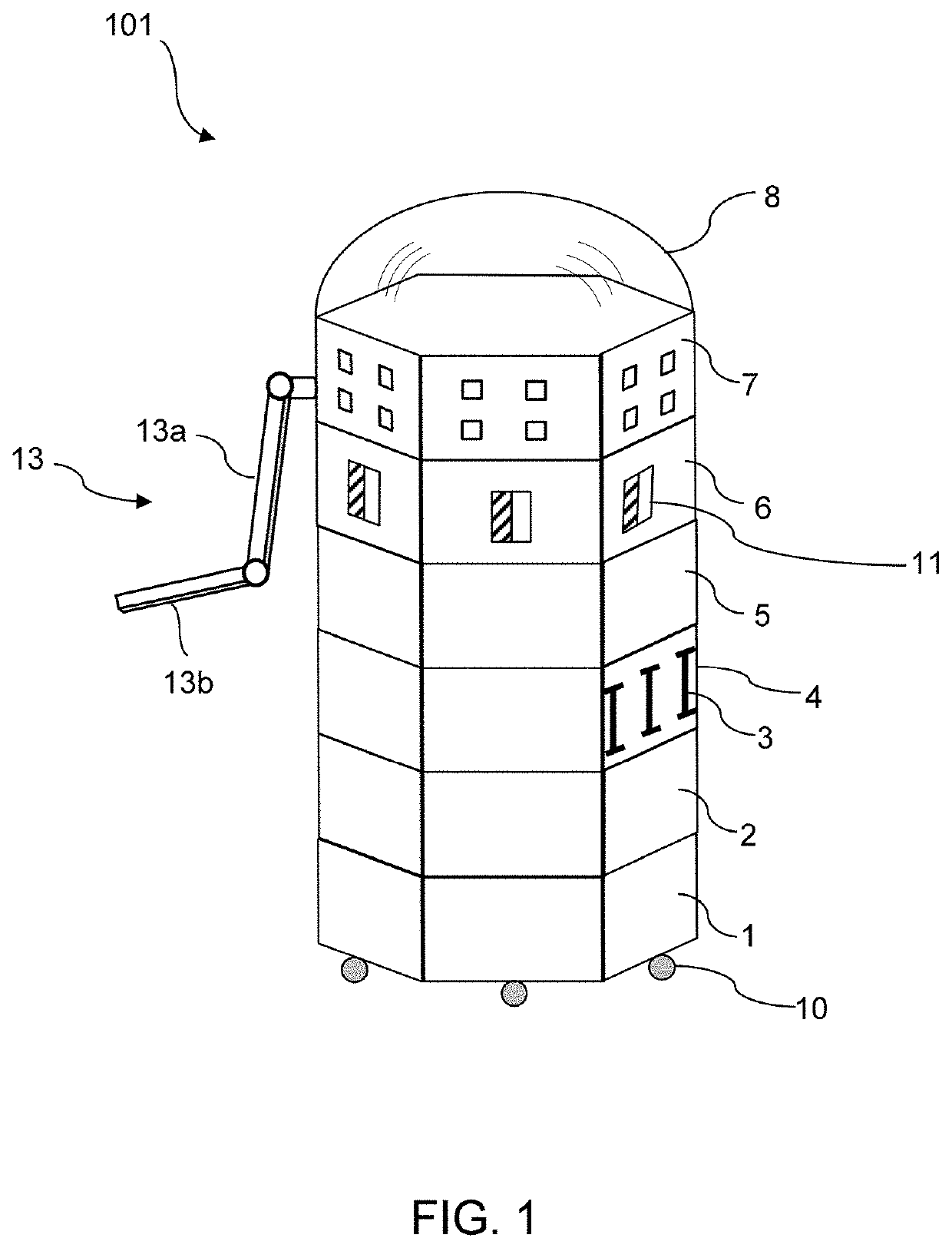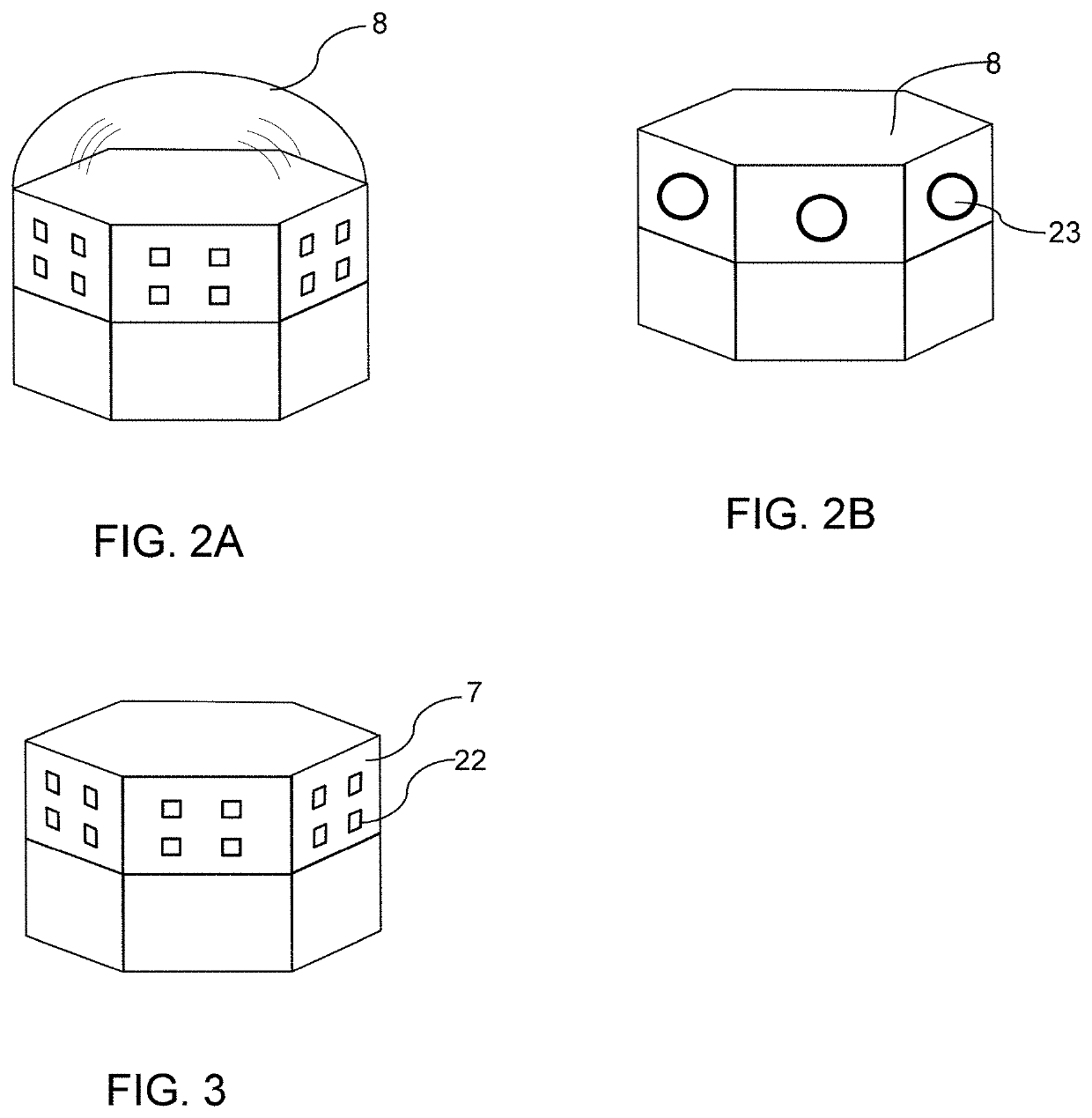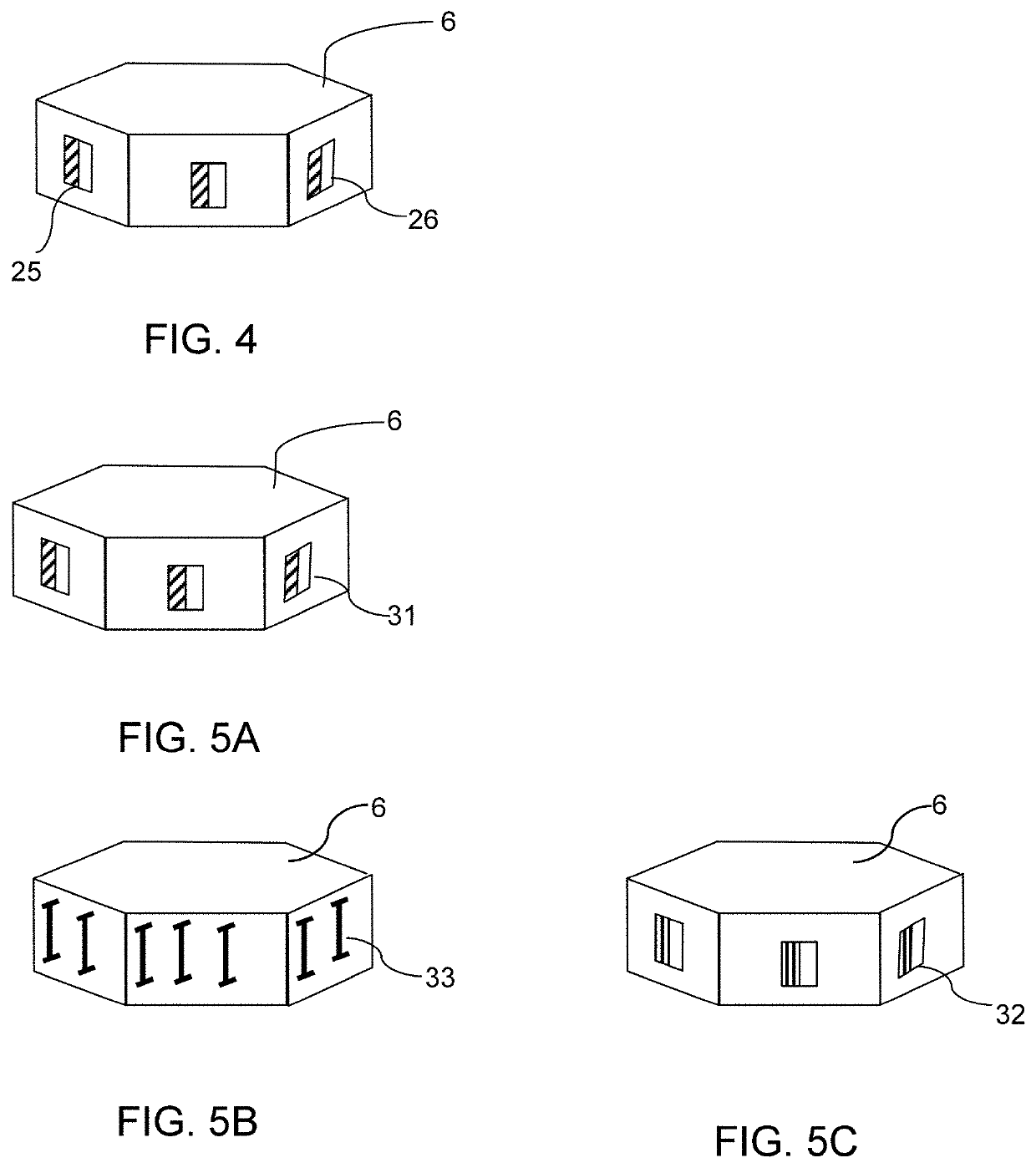Further, by challenges to further collaborators the system may change the circumstances, model and / or
resonance artifacts in the collaborator.
Further, the resonant artifacts may be considered as entangled until expiration, invalidation and / or decoherence occurs.
In an example, the system may infer that a contractual document associated with particular semantic artifacts may impede and / or block a contracting party from performing certain actions without potential consequences.
It is to be understood that when the identification
confusion is higher the system may further challenge for further localization and / or discrimination (e.g. WHICH DISPLAY (IN
CONFERENCE ROOM)?—THE ONE BY THE WINDOW).
The system may associate rewards with affirmative
resonance; further, it may associate risks with non-affirmative
resonance and / or non-resonance.
As such, it may not pursue a goal if the budgets and / or risk required to acquire a first artifact associated with the goal
inference and / or projection are higher than a previously learned budgeting interval; stress and dissatisfaction factors may also increase during such inferences.
Further, the system may underestimate earlier dissatisfaction, concern and / or stress factors while overestimating the same factors associated with a later achievement of the goal.
Further, based on high (entanglement) entropy between capacity vs demand it may further undershoot one vs another.
Analogously, by H / ENT, when the demand over-weighs and / or overshoots the capacity the availability of feasible, endpoints and / or links may decrease.
As such, the system may be biased towards applying and / or being LIKELY to apply those routes whenever new inferences occur and thus bias the projected inferences toward such artifacts.
This may happen when the system cannot reduce
confusion in collaborator, when non-affirmative resonance is high and / or when the budgets are tight.
When presented with multiple routes in uncertain / unknown circumstances the system may be biased to overestimate the risk of the lower budget
route while may underestimate the satisfaction / reward of the higher budget
route.
Further, the system may overestimate / underestimate the satisfaction with an option in
a domain if an associated semantic identity is high / low factorized in another domain especially if the domains are affirmative resonant.
Further, the system may overestimate and / or underestimate the shift, drift and / or entropy in rapport with semantic trails.
However, in some situations the diversification strategy may not be feasible and / or available and thus the system may infer “critical” type
semantics for particular artifacts, fluxes, streams and / or collaborators.
However, the resonance and / or entanglement may collapse if the capability is not available and / or (incoherently) impacting the
inference on the (composite) goals of A and / or further stability of the goal (e.g. shift, drift, entropy from projections etc.).
The system may express doubts and / or discrimination challenges.
However, if the projected
inference and / or required budgets for performing the action are high and the system doesn't have circumstantial coherent understanding it may want to challenge about the device (e.g. from an additional flux) IS THE (MUSIC) DEVICE (STILL) ON?
Further, the system may perform challenges and / or
confusion reduction by other active semantic profiles which may be affected by the action (e.g. of some other persons and / or groups affected by the action and / or
diffusion of the action).
When the likeability and / or desirability is high the system may overestimate / overshoot the demand; further, when assessing usefulness and / or acquiring a likeable artifact the system may overestimate the risk of loss and / or underestimate the risk of
gain and thus, entering offensive behaviors and projecting goals / plans of gaining the desired artifact.
When the likeability and / or desirability is low the system may underestimate / undershoot the demand; further, when assessing usefulness and / or acquiring the less desirable artifact the system may underestimate the risk of loss and / or overestimate the risk of
gain through projections.
If the projections are not feasible and / or do not match the truth then the system may factorize dissatisfaction, concern and stress factors in regard to projection plans.
While the system identifies foes, it may overestimate and / or underestimate the loss or
gain and enter offensive and / or defensive behaviors.
Analogously, the system identifies friends when they have similar competing tactical goals (but the system may underestimate and / or overestimate the loss or gain for strategic goals) and / or they do not compete for the same goals, resources and / or resonances.
As specified in the previous example, the user may specifies the
oxygenation, however since the actuation of
oxygen tank releasing and / or evacuation actuators have a certain capability range (e.g. flow rate) the system may not provide and / or diffuse sufficient
oxygen in order to achieve the user trajectory.
In cases where the system wants to delegate the ownership of an activity, task, action and / or circumstance then it may challenge collaborators in regards with such actions while allowing for various degrees of resonance, confusion, concern and / or likeability in the collaborator.
Further, the system may gate such opinions, advices and / or analysis if the rating is low (e.g. low rating means they are too biased, false etc.).
In addition, the hostility is decayed when the semantic identity exhibits offensive affirmative and / or defensive behaviors towards friends and / or highly affirmative semantic groups.
Further, the system may express regrets for being too offensive and / or too defensive.
The system may challenge and / or decays the truth factors when it infers overestimation and / or underestimation biases.
The system may use challenges to the
semantic network about semantic identities and their intentions.
Analogously, potentially based on high (entanglement) entropy the system may deselect, disable and / or hide various semantic artifacts,
user control interfaces and / or windows.
The system may challenge collaborators to express their opinion and / or analysis on the incidents.
The system may ingest financial assets and liabilities and infer the operating (interest) rates intervals; further, the system may perform routing within semantic flux network for buy / sell assets, challenges to current / potential customers, marketing campaigns and / or further challenges to optimize liquidity.
However, the divisional entity may still be biased and / or highly connected to the original hierarchical (leader) endpoint and generate income and / or profits for that endpoint.
When performing inferences, the system may counter bias factorizations of syndicates and thus biasing for inclusion of the artifacts which are less and / or non-syndicated.
Based on contractual evidence and / or clauses the system may challenge and / or be refunded for the budgets that have been spent on clauses breached by other parties and / or collaborators.
In some examples, the system may not allow the placement, composition and / or selection of controls and / or graphs if the semantic rules and / or routes won't allow it and / or the composite inferences are incoherent, confused and / or do not make sense.
In some examples, the system determines that the locks on the fairings bear too much pressure /
shear stress and / or can become hazardous in particular windy conditions and / or when fairing is extended / retracted.
In some examples, hazardous storage conditions and / or manipulation may determine factorization of
hazard and / or risk.
In an example, the system instructs a carrier to not turn in a particular direction because the environmental conditions (e.g. wind, fire etc.) may cause hazardous inferences to diffuse, spread and / or factorize and / or affect artifacts including the carrier.
The system may fight when the inferences, projections and / or consequences on foes actions determine highly factorized dissatisfaction, unhappiness and / or high risk.
The system may factorize
anxiety when bullied and / or when its (published) semantic identity and capabilities are threatened in the
semantic network.
The system is biased to fight when its highly affirmative semantic identities and / or high investment artifacts (e.g. artifacts which required high budgets for inferences and / or achievement) are threatened.
Further, by WENT with affirmative inferences, the system is biased to flight when its low-affirmative / non-affirmative semantic identities and / or low / null investment artifacts are under
threat.
The system may overshoot / undershoot the goal and damp it when budgets are tight and / or is under pressure.
When connected and / or instructing systems to connect / entangle the system may infer the risks of losing the connection / entanglement.
The system may invalidate particular affirmative resonances if the resonant collaborators repeatedly induce inferences which are blocked by hard semantic rules and / or routes.
The system may generate impactful and / or surprise advertisings.
The
distortion may occur due to biases and / or further semantic artifacts used in inferences.
Further, based on the
distortion factor the system may infer hostility factors and / or further censorship factors of the
distortion generated group in rapport with the distortion-ed semantic components and / or identities.
Further, it may gate, diffuse and / or cutoff opinions / analysis comprising distorted artifacts.
It is to be understood that in the case of tapping the system may not infer that a composite semantic identity and / or semantic group is assembled because the
diffusion at the tapping and / or
assembly endpoint is minimal, non-existent, not enabled and / or not possible.
The system may factorize confusion when there is no clear leadership between the car, its components or environmental artifacts at EPOA and / or associated endpoints in the selection inferences.
In the case that the system detects
hazard and / or confusion it may challenge the user and / or subject for feedback.
The (under) pressure inferences may increase dissatisfaction, concern and / or stress factors if not mitigated within their hysteretic and / or damping interval.
When under pressure is high and dissatisfaction, concern and / or stress non-affirmatively collapsed (e.g. against system goals) the system may infer a (supervisory) artifact and / or group lack of leadership and / or lack of coordination in the flux network.
The system may further use challenges to reduce confusion and / or further discriminate the indicated artifacts.
Once the rental (or temporary supervisory operation of a renter) period and / or activity is over and / or renter instructs the post to return to the owner and / or storage, the post may erase, invalidate and / or dispose of the personal identifiable information, semantic profiles and / or semantic artifacts associated with the renter.
Further, such credentials and / or wallets may expire based on semantic time.
In some examples, the user scans an item and rates its desirability and / or likeability; based on further analysis, the system may further challenge the user (for feedback) and / or adjusts the desirability and / or likeability factors.
The system reflects / generates signals which blend into environment (e.g. have low entropy, drift and / or shift from environmental circumstances) and further do not allow the monitoring entities to discriminate and / or detect the semantic cloaked objects in rapport with the environment at particular endpoints and / or locations.
In some examples, the system determines that a collision and / or
route with / by a steel spike, post or other object may cause appearance / aesthetic / health damage (e.g. causing decaying of likeability and / or un-likeability of self with self or others) such as scratches and / or arm (joints) twisting and thus, it may further factorize its inferences as a potential
hazard and / or non-likeable leadership artifact.
As such, the system infers that the potential
hysteresis and / or damping based on vehicle movements and / or further braking / acceleration at particular endpoints may create fluency issues such as low (affirmative) fluency indicators factorizations (and / or by H / ENT high non-affirmative fluency indicators factorizations).
Further, the system may use semantic artifacts of
counter measures within semantic times (e.g. warn the
drone, applies more drastic measures if the warn didn't work / steer as expected and / or
drone is still hostile etc.).
Further, the
distraction factors are high when they decay the resonance of the particular resonant goals and / or budgets.
Further, the system expires the content of the
text box after a sematic time and thus inferring that the
text box is empty.
The system may gate the artifacts which may generate bad publicity,
distraction, distortion and / or ill-inform for the observed semantic identity (e.g.
filter video or sound artifacts and / or signals which may be non-affirmative resonant at the observed semantic identity in rapport with projected inferences in the collaborators and / or audience in a
virtual conference).
As such, the system may project bad publicity, non-resonant projections,
distraction, distortion and / or ill-inform at the semantic identity, collaborators and / or any combination thereof and thus gates such artifacts.
Further, the system may determine the
impact factorizations and further projections in rapport with achieving the goals (e.g. arm twisting may
pose health issues, high costs, risks and / or impairments in the realization of goals (e.g. moving the tea pot)).
Analogously, the system may project hazardous conditions in inventories.
Further, distortion may be inferred when a party or artifact use various anchor points to present its knowledge, successes and / or achievements (thus projecting to induce at self and / or collaborators overestimation of achievements and / or available budgets, and / or underestimation of required budgets and / or potential failures).
When the collaborator goals are associated with distortion the system may infer foe and / or non-resonance.
Further, the system may want to damp the resonance within the distorted
anchor point.
In some cases such distortion is hostile or ill-intended when the system knows that the distortion causes non achievement of goals and / or failure or the distorted party.
Analogously, distorted underestimated affirmative information may determine the system to underspend and thus the system may counter bias by using offensive behaviors in regard to the distorted anchor leadership
semantics.
The distortion may cause activities which are non-affirmative towards the targeted semantic identity goals.
Further, the window may gate only particular hazards (e.g. it can block and / or hardly diffuse gas but it cannot block light etc.).
The system may be challenged and / or redirect questions which doesn't know the answers or is confused about.
The system may not allow the access, transition and / or
diffusion to an endpoint if the circumstantial (supervisory and / or leadership) credentials are not within the semantic group, at the same location and / or in the possession of the transitioning artifacts and / or activity.
In some examples, the system may use “next
meal with meat” inference to order, (re)stock, (re)supply and / or charge from providers the (likeable and / or preferred) meat; however, if the meat cannot be delivered and / or made available at the projected user's
meal location, then the system may either suggest the user with a new
meal location, adjust the meal schedule and / or semantic times and / or further challenges and / or augments the user.
However, as the overall affirmative (resonant) factorizations are low and / or decay the system may challenge itself whether the goals can be adjusted (e.g. do I need meat next meal?, why do I need meat? for energy,
protein and / or taste (
Foe generated (counter)measures may generate distortions and / or impede the signals to be further conditioned, diffused and / or collapsed as per goals.
Further, the system may
record and / or learn the artifacts which generated the distortion and may factorize them as foes.
The system may factorize risk based on and / or for capabilities, budgets and / or value exposed to hazards.
The artifacts at particular endpoints may cause and / or be affected by hazardous circumstances, dispersion fields and / or diffusion.
In some examples, a device and / or post has a capability advertised as “I can support and / or assist with water and bring it on challenge request or when thirsty” and thus the system may use such feature and / or artifact to save budgets and / or focus less on finding a preferred
water supply / supplier; however, if the water is not likeable the system may refactorize the support / assist helper flux.
Such techniques may (project to) induce changing anchor points in the collaborator and / or they may determine
anchor point distortion.
The system may detect deception by challenging the deceptive party and / or flux network.
Further, the system may challenge the deceptive party to respond with activities, semantic identities, semantic trails and / or further narratives associated with projected deceptive artifacts.
 Login to View More
Login to View More  Login to View More
Login to View More 


